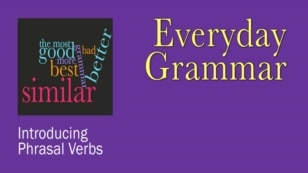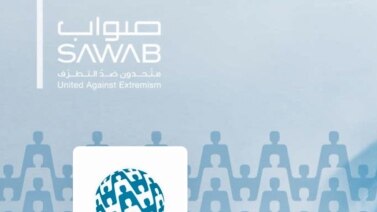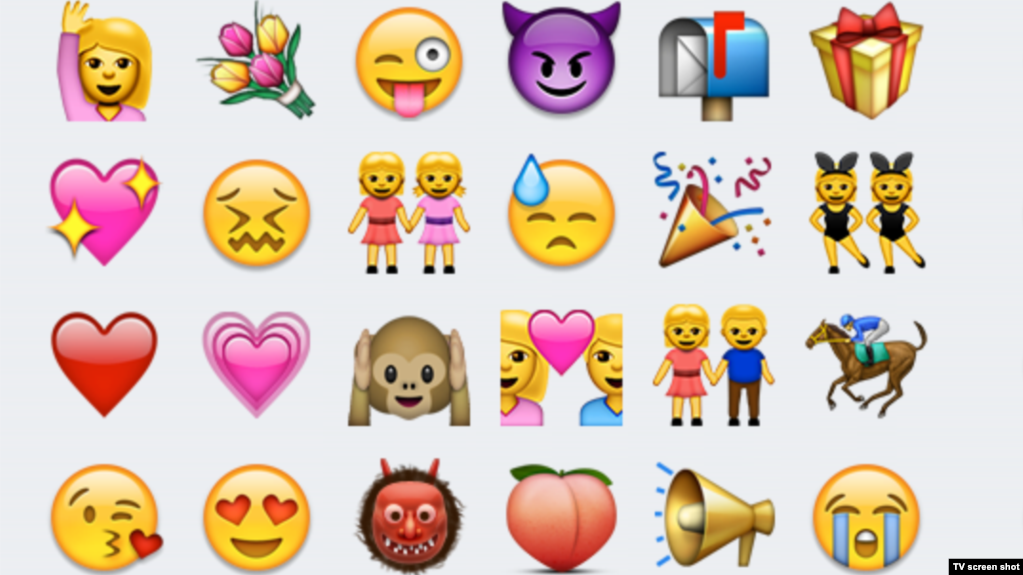
Emojis (and emoticons) can tell a friend you are super happy! :-D
Or super sad. :-(
Without uttering a word. ;-)
And they save time typing.
Emojis are the icons that share a feeling, mood or thought with an image. Usually, it is an image of a facial expression. But it can also be a universal symbol, such as thumbs-up to indicate an acheivement or milestone.

Emojis are different from emoticons. Emojis are images. Emoticons are punctuation marks.
Emojis are used on websites, apps, text messages, email, social media sites and more. This website shows how to use emojis on computers running Windows 10. Look at the Apple website to learn about using emojis on Mac computers.
Your new device will come with many emojis. But you can get more emojis online. You can paste them into Twitter, Facebook, Slack, Instagram, Tumblr and more.

You can use emojis on your phone. But be careful, you may have to pay for each emoji you use in your text messages.
The BBC reported that some carriers in the UK were treating emojis like photos and charging users for each emoji they used.
If you use a lot of emojis, that could cost you a lot of extra money!
You can use emojis in fun ways. You can use emojis in place of the words of your favorite songs, such as Call Me Maybe.
You can use emojis to tell stories. These emojis tell the story of Les Miserables from the book, play or movie:
You can also send your true love emojis to show you care.
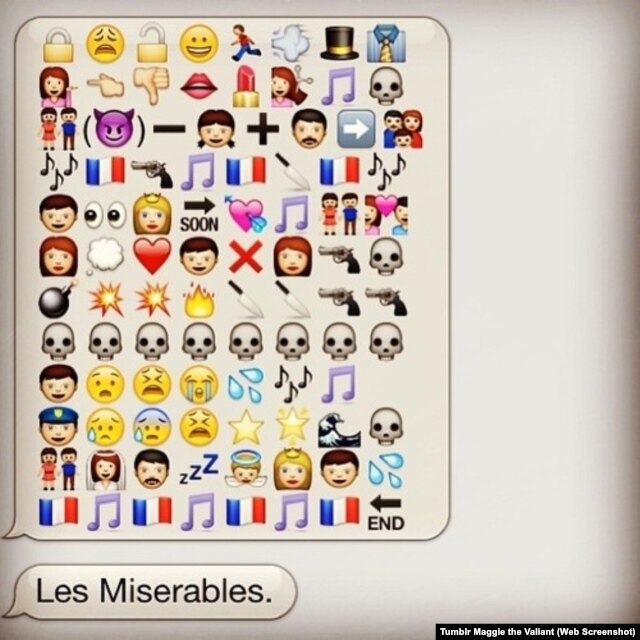
Emojis can also help people with autism, Aspergers and other communication issues. Emoji therapy can help people who can't say words to express how they feel.
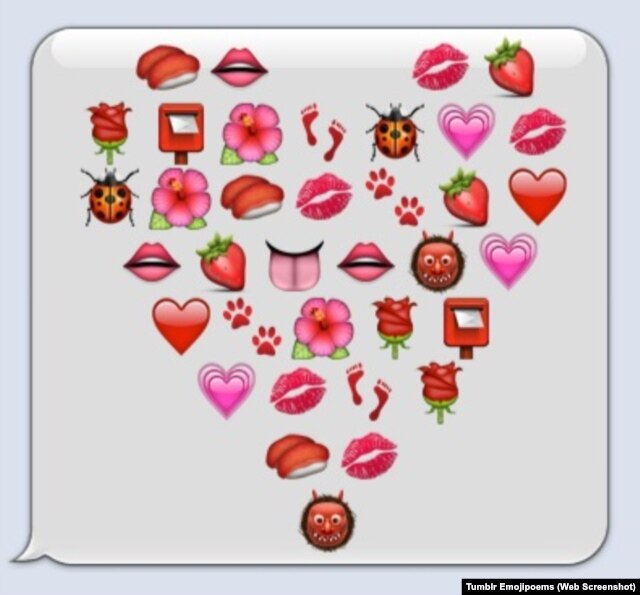
At AutismSpeaks.org, you can find apps such as the Augmentative and Alternative Communication (AAC) app and therapies that use emojis to help people communicate.
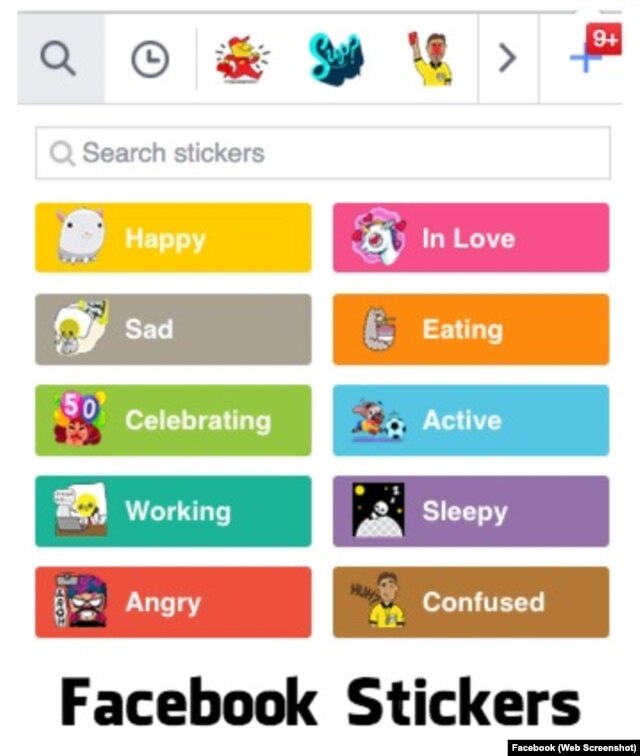
You can use Stickers on Facebook. Tap or click on the happy face icon to see a list of Stickers you can send.
Stickers are drawings like emojis you can use on Facebook and in Facebook Messenger. Learn more about using Stickers from the Facebook help page.
You may see new emojis on Facebook if you live in Ireland or Spain. Facebook is trying new emojis to help people share their feelings.
Facebook calls these new emojis "Reactions." You may see these emojis on Facebook in other countries soon.
According to Mark Zuckerberg, CEO of Facebook, they realize that not all posts will be Liked or even Disliked. "Not every moment is a good moment," Zuckerberg said at a Facebook town hall meeting last month.
Reactions give you a way to express a lot of different emotions. They are also easier to add than regular emojis or Stickers.
According to Irish Times, Facebook didn't want to add a dislike button because it wanted to keep Facebook positive. "A 'dislike' option would not be “in the spirit of the product we’re trying to build,” said a Facebook representative.
Emojis work well on Twitter.
You can add emojis to your tweets. Tweets can only have 140 characters. So, you can save characters by using emojis in your tweets. You can either type “I'm happy” at nine characters or use a happy face emoji that is only one.
Emojis are already a big deal in Direct Messages. We just made them bigger. Send super-sized emojis today! pic.twitter.com/4mBLKRQGNL
— Twitter (@Twitter) October 5, 2015
You can send emojis in Direct Messages on Twitter using your phone or computer.
Bitmoji
Now, you can make emojis of your face. Use the Bitmoji app to make emojis of yourself.
This video shows you how:
And the best part: you can get the Bitmoji app for free!
Be Careful with Emojis
Be careful though when you use emojis. Your emoji may be confusing to others. The meaning of a happy face emoji is clear. But a different emoji maybe misunderstood.
If you send an emoji from an Android to someone who has an iPhone, they may see a different image. A helpful website shows you what an emoji looks like on different phones and websites.
USA Today newspaper started using Facebook’s new emojis in its print newspaper. Some people think emojis didn’t belong in news articles.
I don't know if you've picked up a newspaper lately, but...uh, how long has USA Today had emojis? pic.twitter.com/77nZIhV1eA
— A$AP Mom (@suburbanitis) October 9, 2015
I'm glad USA Today started using emojis. Otherwise I wouldn't have known how to feel about a hero getting stabbed. pic.twitter.com/TfAcKsSUtH
— AmyOztan (@AmyOztan) October 9, 2015
What Are Your Thoughts on Emojis
Do you like to use them? Were you ever confused by an emoji? Have you seen the new emojis on Facebook or Twitter? Do you think emojis belong in newspaper articles?
Let us know in the Comments Section.
Carolyn Nicander Mohr wrote this story for Learning English. Kathleen Struck was the editor.
Words in This Story
emoji - n. a small digital image or icon used to express an idea, emotion, etc., in electronic communication
icon - n. a small picture on a computer screen that represents a program or function
emoticon - n. a group of keyboard characters that are used to represent a facial expression (such as a smile or frown)
punctuation - n. the marks (such as periods and commas) in a piece of writing that make its meaning clear and that separate it into sentences, clauses, etc.
autism - n. a condition or disorder that begins in childhood and that causes problems in forming relationships and in communicating with other people
Aspergers syndrome - n. a developmental disorder affecting ability to effectively socialize and communicate
* Carly Rae Call Me Maybe emoji image from Glamour
* Les Miserables emoji image from Tumblr
* Valentine emoji image from Tumblr

